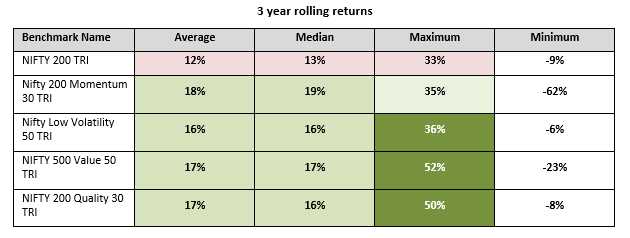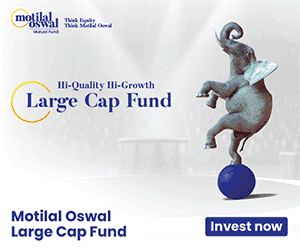UTI Quant Fund: Create alpha in your portfolio through quant investing

Quant investing is becoming increasingly popular globally, especially in developed markets. It is also gaining traction in India, especially in the PMS space. However, retail investors can benefit from quant investing through quant funds, which are thematic equity mutual fund schemes using quantitative investment strategies. Most quant funds have been launched in the last 5 years or so. The newest quant fund is UTI Quant Fund which was launched in January of 2025. The investment strategy of this fund is based on the UTI's proprietary factor model and has the potential of generating superior risk adjusted returns, as suggested by back-testing results. In this article, we will review the investment strategy of this fund.
Why invest in Quant funds?
- Human beings have emotions. No matter how objective a person tries to be when making decisions, there can be situations where his / her decisions are influenced by emotions.
- Fund managers can make errors of judgment despite his / her best efforts and intentions. Even globally renowned investment gurus have admitted that they have made errors in their judgements at times.
- On the contrary, a computer algorithm has no emotions and hence does not suffer from any behavioural biases. Machine driven investment decisions are based on a set of clearly defined quantitative rules, hence are objective and based on the parameters of the specified model.
- Computer algorithms do not make human errors and therefore, are more accurate in making mathematical calculations.
- With advances in information technology, computer software can work on huge datasets. Therefore, quant funds can use more data to evaluate their investment hypothesis or strategy versus a fund manager who may have to rely more on experience and judgement in making investment decisions.
- Quant investing is more of science and mathematics; it follows a more consistent and systematic (rule based) investment approach, devoid of human emotions, which may benefit the investor in the long term.
UTI Quant Fund
This fund invests in various distinct factors i.e., Momentum, Low Volatility, Value and Quality. The fund dynamically rebalances its allocations to these distinct factors as guided by the UTI's proprietary factor allocation model. The factor allocation model of UTI Quant Fund aims to deliver alpha and superior risk adjusted returns.
Understanding factors

Factor investing can create alpha
The table below shows the 3 year average, median, maximum and minimum rolling returns of different factor indices versus the broad market index Nifty 200 TRI over the last 20 years. You can see that each of these factor indices have delivered higher average and median rolling returns compared to the broad market index.

Source: Advisorkhoj Research, as on 17th November 2025
Factor investing can create superior risk / return trade off
The table below shows that distribution of 3 year rolling returns of different factor indices over different return ranges versus the broad market index, Nifty 200 TRI. You can see that except the value index, the other factor indices had lesser instances of negative returns compared to the broad market index. At the same time factor indices have higher probabilities of delivering 12%+ and 20%+ CAGR returns compared to the broad market index. In short, factor indices provided superior risk / return trade off compared to the broad market index.

Source: Advisorkhoj Research, as on 17th November 2025
Why multi-factor model?
Factors have short cycles and winners keep rotating across factors in different market phases. A multi-factor model endeavors to bring stability and relatively higher consistency in portfolio returns.

Source: Advisorkhoj Research, as on 17th November 2025
How UTI Quant Fund's multi-factor model works?
UTI's Factor Allocation Model allocates to different factors based on their relative performance across cycles. The allocation can be made in one or all the four factors as specified in the following framework.

Source: UTI MF
How the factor allocation model have allocated across different market phases?

Source: UTI MF, as on 31st December 2024
How factor model performed versus broad market index across market phases?
The factor model of UTI Quant Fund outperformed the broad market index in 15 out of the last 20 fiscal years. The factor model outperformed the broad market index both in up market and down market phases (see the chart below).

Source: UTI MF, Advisorkhoj Research, as on 31st March 2025
The factor model outperformed the broad market index across 3 and 5 year rolling periods across different market conditions over the last 20 years (see the table below).

Source: UTI MF, Advisorkhoj Research, as on 31st October 2025
Why invest in UTI Quant Fund?
- The factor model of UTI Quant Fund has delivered higher returns than the individual factors and broad index, with a consistently high degree of probability.
- The factor model of UTI Quant Fund has demonstrated resilience during market down cycles and has delivered relatively better returns during market up cycles versus individual factors.
- The factor model of UTI Quant Fund allocates dynamically across factors enabling a consistent record of alpha generation versus the broad index.
Who should invest in UTI Quant Fund?
- Investors seeking capital appreciation over long investment horizon.
- Investors who want to rely on rule based, quantitative / algorithmic approach on investing for a portion of their portfolio.
- Investors with very high-risk appetites.
- Investors with minimum 5-year investment horizon.
Investors should consult with their financial advisors and mutual fund distributors if UTI Quant Fund is suitable for their risk appetite and investment needs.
Mutual Fund Investments are subject to market risk, read all scheme related documents carefully.
Queries
-
What is the benefit of mutual fund STP
Aug 29, 2019
-
How much to invest to meet target amount of Rs 2 Crores
Aug 26, 2019
-
Can I achieve my financial goals with my current mutual fund investments
Aug 24, 2019
-
Can you tell me return of various indices
Aug 19, 2019
-
What would be the post tax return on different investments
Aug 18, 2019
-
Which Principal Mutual Fund scheme will be suitable for my retirement corpus
Aug 16, 2019
-
What is the minimum holding period for availing NCD interest
Aug 4, 2019
Top Performing Mutual Funds
Recommended Reading
Fund News
-
The Wealth Company Mutual Fund launches The Wealth Company Gold ETF
Dec 16, 2025 by Advisorkhoj Team
-
Axis Mutual Fund launches Axis Gold and Silver Passive FOF
Dec 10, 2025 by Advisorkhoj Team
-
Jio BlackRock Mutual Fund launches JioBlackRock Arbitrage Fund
Dec 9, 2025 by Advisorkhoj Team
-
Tata Mutual Fund launches Tata BSE Multicap Consumption 50:30:20 Index Fund
Dec 9, 2025 by Advisorkhoj Team
-
Edelweiss Mutual Fund launches Edelweiss Silver ETF Fund of Fund
Dec 8, 2025 by Advisorkhoj Team














